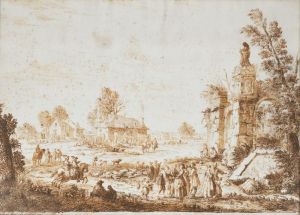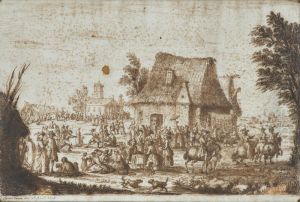Cavaleiro De Faria Paintings
Cavaleiro De Faria, born in Portugal in 1890, was a notable figure in the early 20th-century European art scene. His full name, seldom used in its entirety, was José Maria de Faria, but he adopted the moniker 'Cavaleiro' (meaning 'knight' in Portuguese) to emphasize the chivalric ideals and romanticism that deeply influenced his work. De Faria's art journey began in the culturally rich atmosphere of Lisbon, where he was born and raised. He was part of a generation that saw the transition from traditional forms of art to more modern and abstract expressions, yet he managed to carve out a unique niche for himself that didn’t strictly adhere to any single movement of his time.
De Faria's early works were heavily influenced by the Symbolist movement, characterized by their dreamy qualities and the use of mythological and literary references. His fascination with medieval themes and the natural world was evident throughout his career. However, as he matured as an artist, his style evolved, incorporating elements of Expressionism and Cubism. This blend of influences allowed him to create a distinctive style that set his work apart from his contemporaries.
Cavaleiro De Faria was not just a painter; he was also a skilled printmaker and illustrator, contributing to various literary magazines and books. His illustrations often featured elaborate, fantastical landscapes and characters, showcasing his imagination and technical skill. Despite his talents, De Faria remained somewhat of an enigmatic figure in the art world, often shying away from the limelight and choosing to live a relatively secluded life.
Throughout his career, De Faria struggled with the commercial aspects of the art world, often prioritizing his artistic integrity over financial gain. This principled stance earned him respect among his peers but also meant that his work was not as widely recognized during his lifetime as some of his contemporaries. It was only posthumously that his contributions to the art world began to be fully appreciated, with retrospectives and exhibitions celebrating his unique vision and technique.
Cavaleiro De Faria passed away in 1953, leaving behind a body of work that continues to inspire and captivate art lovers and historians. His legacy is that of a visionary artist who remained true to his artistic convictions, exploring and blending various styles to express his unique perspective on the world around him. Today, his works are considered important pieces in the understanding of European art’s transition through the 20th century, bridging the gap between the old and the new, the traditional and the modern.


